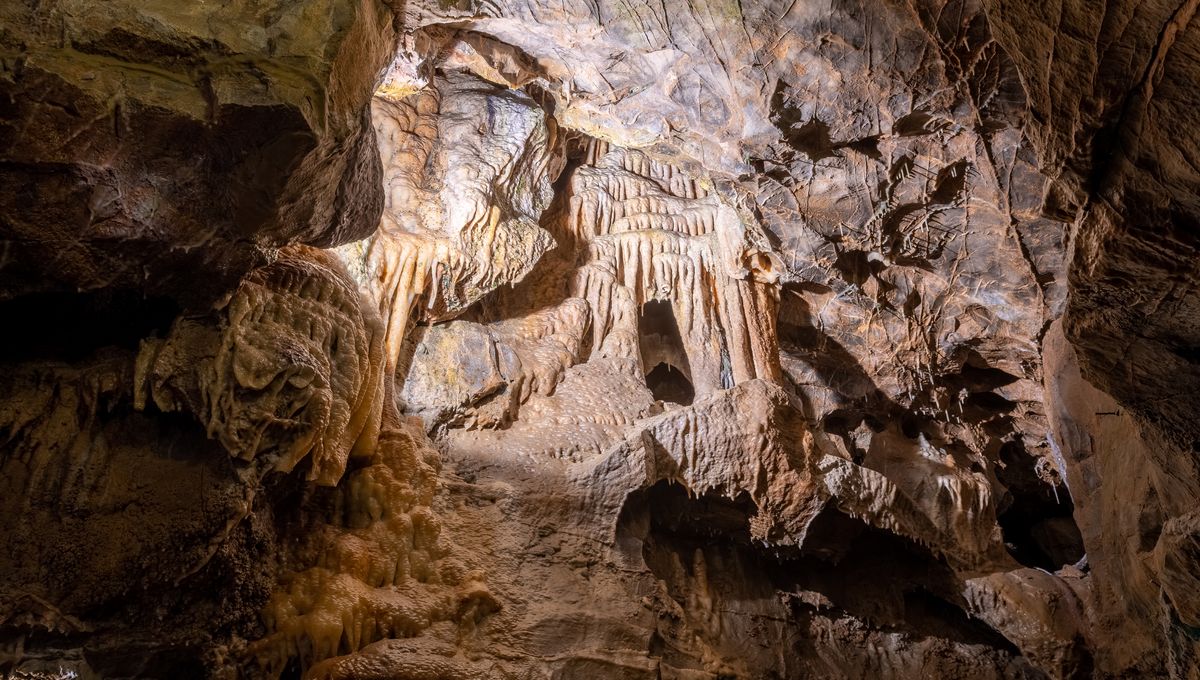
There is an ancient cave in Somerset, England, that may hold a complicated secret related to our prehistoric past: evidence of human cannibalism.
Gough’s Cave, which was formed around 500,000 years ago, is located in Cheddar Gorge, which is made of limestone (not cheese) and is located in the Mendip Hills near Bristol. The cave is home to various large chambers, impressive rock formations, and also contains the Cheddar Yeo, the largest subterranean river in Britain.
But among these features of natural history are archaeological materials related to human habitation from around 14,700 years ago, and some of this evidence paints a picture of an ancient practice that we tend to like to forget about.
Within Gough’s Cave, archaeologists have recovered remains of several people, including two teenagers and a child who was around 3 years old. Their bones appear to show strong evidence of cannibalism.
According to Dr Silvia Bello, from the Natural History Museum in London, “The evidence at Gough’s Cave points to a sophisticated culture of butchering and carving human remains.”
The bones seem to have been chewed by humans. And we’re not just talking about snackish nibbles – some of the evidence suggests that long bones and ribs were cracked open, allowing someone to get at the marrow and the bone’s grease. Some bones also have cut marks in them where soft meat was removed. And, finally, some of the skulls have been hollowed out and transformed into crude cups or perhaps bowls.
But one of the most interesting aspects of this find is something that’s conspicuous in its absence. There does not appear to be any sign of violence on the remains prior to death. It seems the people were not likely killed as a result of conflict, despite their seemingly grisly end. So what’s going on here?
Cannibalism: cruelty or compassion?
Well, there are two potential explanations. The first is that this is an example of the kind of cannibalistic act we think of today – a cruel and gruesome side of human history. However, it is possible that these cases demonstrate a more complex behaviour that was itself the outcome of compassion.
To be sure, the subject of cannibalism can be hard to swallow. Our pop culture references tend to focus on cruel scenarios and situations concerning serial killers, zombies, and monsters. This has helped establish the idea as completely taboo, despite it being a common feature of many historical cultures throughout history.
Our ancestors have been eating one another for millions of years. In lots of cases, this was done as a point of necessity – to survive abject starvation – but in other instances, it became a feature of our religions and funerary practices. For instance, in Gough’s Cave, the bodies eaten by other people may have been those belonging to loved ones.
The individuals found in the cave would have died during the last Ice Age, which means they could have been eaten as a means for survival, but this is not a sufficient explanation on its own. This is because there is actually an abundance of animal bones in the same caves, which means food was not completely absent. Then there’s the care taken to transform the skulls into drinking vessels.
As grim as it seems, using skulls as containers is relatively well known among many past cultures. The Vikings and Scythians are two examples of people who had similar practices, but the skulls from Gough’s Cave are among the earliest examples discovered to date.
“The skulls were scrupulously cleaned of soft tissue shortly after death. Marks show cutting of the lips, cheeks and tongue, and extraction of the eyes. Then the bones of the face and the base of the skull were carefully removed. Finally the cranial vaults were meticulously shaped into cups,” Bello explained.
The care taken to prepare these skulls suggest they held significance beyond simply being used for nutrition. Equally, 3D analysis of an engraved forearm bone found in the cave also suggests that it was marked after the meat had been removed.
This, for Bello and her colleagues, is significant. “The sequence of the modifications made to the bone strongly suggests that the engraving was an intrinsic part of the cannibalistic ritual and held hidden symbolic meaning.”
You can learn more about the role of cannibalism as a funerary practice here.
Source Link: The Secrets Of Gough’s Cave: Cannibalism And Ancient Rituals From 14,700 Years Ago